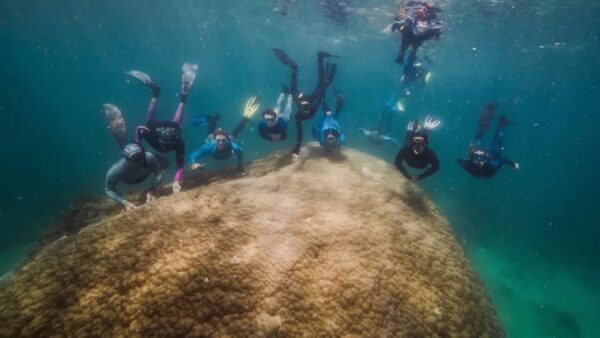A giant coral has been discovered in Australia’s Great Barrier Reef
10.4 meters wide and 5.3 high, it has been named “Muga Dhambi”, “Great Coral” in the Manbarra language

10.4 meters wide and 5.3 high, it has been named “Muga Dhambi”, “Great Coral” in the Manbarra language
In the Coral Sea off the Queensland coast of Australia, is a small archipelago of marvellous islands: the Palm Islands. Among these is Orpheus Island, known as Goolboddi in the Aboriginal language, a national park which is a true paradise, together with another 1300 hectares of parkland.
All this notwithstanding, there is a human presence in the area, even if it is small and careful to protect the environment. There is even a resort, the Orpheus Island Lodge, which can be reached by helicopter or by seaplane.
Visitors can snorkel and dive to explore the coral reef, with no other equal to its 1100 difference species of fish and 340 varieties of coral. It is also possible to reach nearby Hinchinbrook Island, a deserted island where visitors can hike through the rainforest on the lookout for Zoe and Mulligan falls, or on the hunt for the saltwater crocodiles which swim up the rivers. From a distance, of course.
In this marvellous ocean the largest coral ever found on the Great Barrier reef was discovered: 10.4 meters wide and 5.3 metres tall, it has been named “Muga Dhambi“, meaning the “Great Coral” in the language of the Manbarra, the ancestral custodians of the Palm Islands. It is a brain coral of the Porites genus and, scientific examination carried out by the marine biologists of Reef Ecology and the University of John Cook, in partnership with Reef Check Australian Coral Reef Research and Manbarra Aboriginal Corporation, noted that the coral is in good health, with approximately 70% of the coral alive.
Considering the growth rate of coral it is estimated that this specimen is between 421 and 438 years old. Muga Dhambi is therefore older than the first European colonists and its impressive calcium carbonate structure has survived 80 cyclones, a number of cycles of coral bleaching, hungry sponges and starfish and, up until now, global warming. That’s one really strong rock. That’s alive, obviously.
Source cover image: Richard Woodgett – Grumpy Turtle Creative
Source gallery images: Scientific Reports and Wikipedia
Topics: Great Barrier Reef, muga dhambi







